#wool clothes
Text
youtube
Join me as I dip dye a merino wool shirt with dyer's chamomile and black hollyhock to create a beautiful ombre effect. Inspired by the summer flowers at The Color Farm, I continue the 21 Day Wardrobe Challenge with Wool& by adding another layer of natural color to this soft garment. This tutorial will introduce you to the cozy wool shirts of Wool& to show you how to add your own unique color flare with a dip dye technique overlaying two natural dyes on a wool top. You will see my ombre dye results for inspiration to embrace slow fashion in a colorful way.
CHAPTERS
0:00 Introduction - Ombre dip dye on wool
1:37 Wool & wardrobe challenge - Part 2
2:50 How to wash wool
7:19 Dye 1 - dyer's chamomile
11:47 Pinning for dip dye
13:13 Dip 1
14:45 Dye 2 - black hollyhock
17:54 Dip 2
19:47 Ombre dip dye result
21:07 Wrap-up
22:15 Sneak peak of next video tutorial
23:00 Bloopers
SUPPLY LIST
Dye flowers - dyer's chamomile & black hollyhock
Pot with lid
pH neutral soap
Plastic bin
Safety pins
Textile - merino wool used in this video
Mordant - aluminum potassium sulfate
#Margaret Byrd: Color Quest#solarpunk#dye#natural dye#how to dye#diy#how to#do it yourself#dip dye#how to dip dye#ombré#wool#merino wool#wool fabric#wool shirt#wool clothes#Youtube
5 notes
·
View notes
Text
Embrace Comfort and Versatility with Merino Tops: The Ultimate Guide
Merino wool has long been celebrated for its unparalleled softness, breathability, and versatility. As a natural fiber derived from Merino sheep, it boasts a myriad of benefits that make it the ideal choice for clothing, particularly in the form of merino tops. Whether you're hiking through rugged terrain, commuting to work, or simply lounging at home, merino tops offer unparalleled comfort and style for any occasion.
What Makes Merino Wool Special?
Merino wool stands out among other types of wool due to its finer fibers and unique properties. Unlike traditional wool, which can be coarse and itchy, merino wool is incredibly soft and gentle against the skin. Its fine fibers also make it lightweight and breathable, ensuring optimal comfort in both warm and cool temperatures. Additionally, merino wool is naturally moisture-wicking, meaning it can absorb and release moisture vapor, keeping you dry and comfortable in any climate.
The Versatility of Merino Tops
Merino tops come in various styles, including t-shirts, long-sleeve tops, and sweaters, making them suitable for a wide range of activities and settings. Whether you're layering up for outdoor adventures or seeking a stylish yet functional everyday wardrobe staple, there's a merino top to suit your needs.
Benefits of Merino Tops
1. Temperature Regulation: Merino wool's natural ability to regulate body temperature makes it perfect for wearing year-round. It keeps you warm in cold weather and cool in hot weather, making it an excellent choice for outdoor enthusiasts and travelers.
2. Moisture Management: One of the most significant advantages of merino wool is its moisture-wicking properties. Unlike synthetic fabrics, which can trap sweat and odor, merino wool wicks moisture away from the skin, keeping you dry and comfortable even during intense physical activity.
3. Odor Resistance: Merino wool naturally resists odor-causing bacteria, allowing you to wear your merino top multiple times between washes without worrying about unpleasant smells. This makes merino tops an excellent choice for travel, camping, and outdoor adventures where laundry facilities may be limited.
4. Softness and Comfort: Thanks to its fine fibers, merino wool is exceptionally soft and comfortable to wear, even for those with sensitive skin. Unlike traditional wool, which can feel scratchy and irritating, merino wool feels luxuriously smooth and gentle against the skin.
5. Durability: Despite its softness, merino wool is surprisingly durable and long-lasting. With proper care, a high-quality merino top can withstand years of wear and maintain its shape and performance.
Popular Brands and Options
Several brands specialize in merino wool clothing, offering a wide selection of merino tops to choose from. Unbound Merino, for example, is known for its high-quality merino wool t-shirts and base layers designed for travel and outdoor adventures. Other popular brands include Icebreaker, Smartwool, and Woolx, each offering a range of merino tops in various styles and colors to suit every preference.
Choosing the Right Merino Top
When selecting a merino top, consider factors such as the intended use, climate, and personal preferences. For high-intensity activities and warm weather, opt for lightweight merino tops with enhanced breathability and moisture-wicking properties. For colder climates or layering purposes, choose thicker merino tops with added insulation.
Conclusion
Merino tops offer the perfect blend of comfort, performance, and style, making them a wardrobe essential for anyone seeking versatile and high-quality clothing. Whether you're hiking, traveling, or simply going about your daily routine, merino tops provide unparalleled comfort and performance in any situation. Invest in merino tops today and experience the luxury of Australian merino wool clothing firsthand.
#merino wool#merino#merino wool clothes#merino wool clothing#merino t-shirts#wool clothes#wool clothing#woollen clothing#merino wool t-shirt#merino wool t shirts#unbound merino#merino wool clothes australia#merino wool clothing australia#australian merino wool clothing#merino wool australia clothing#australian wool clothing#australia merino wool
0 notes
Text

he finally figured out how to use the washing machine!
non-gif version:

#art#twisted wonderland#twisted wonderland spoilers#gif warning#gifs that will wash your wools in high heat and not understand what went wrong warning#oh malleus. oh my boy.#he was SO PROUD#he STUDIED and PRACTICED#i love this idiot#the mental image of everyone else in diasomnia silently watching mal trying to wash his clothes in the kitchen sink#how have none of them figured out what a goober he is yet
5K notes
·
View notes
Text

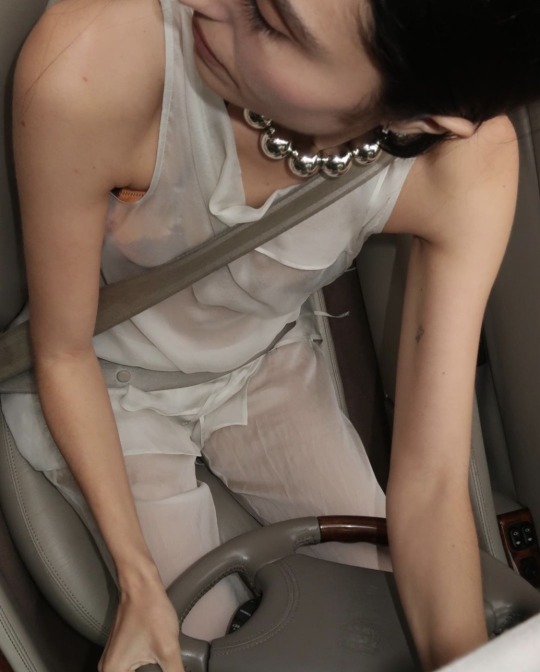




Paloma Wool: ‘Amelia in the Car’ Series (2024)
#paloma wool#fashion#girlcore#coquette#coquette fashion#softcore#soft girl#aesthetic#photography#clothes#lovecore
678 notes
·
View notes
Text

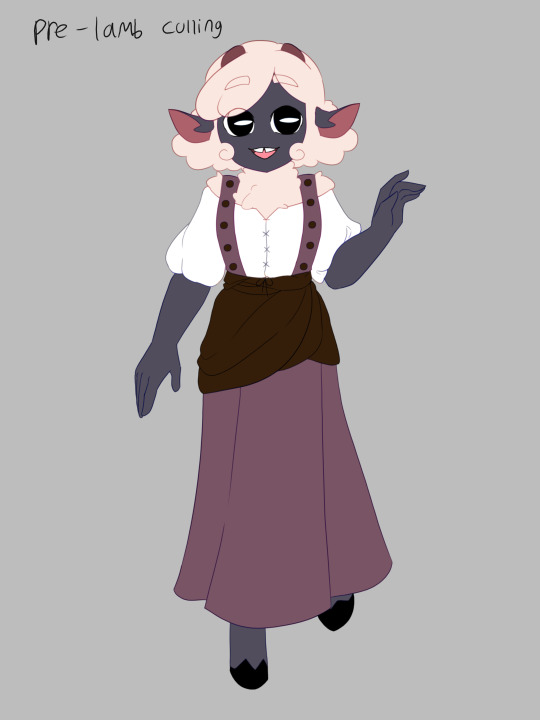



we got lambs, lambs, and more lambs.
also, bonus corset lamb (I love corsets)
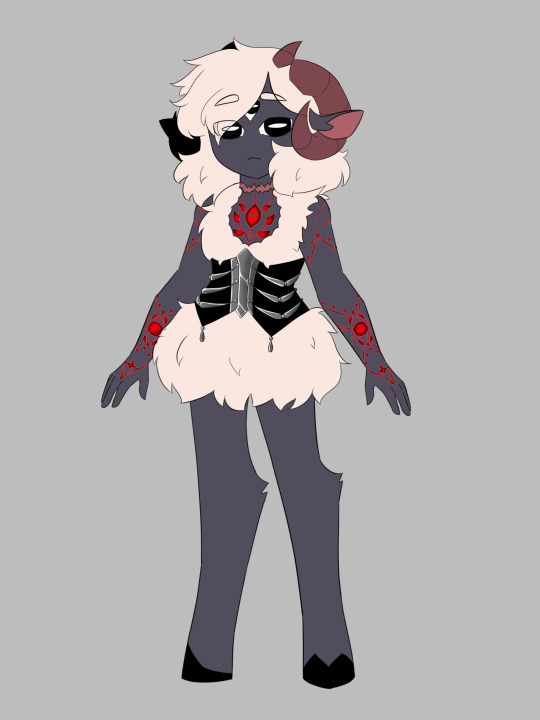
#cult of the lamb#cotl lamb#cotl#cult of the lamb lamb#Her wool gets so squished in her clothes#also#ignore i keep posting at late hours
288 notes
·
View notes
Text


Thomas Langhendries at Elite Paris photographed by Eber Figueira, in exclusive for Fucking Young! Online
#mens style#menswear#wool#wool sweater#men in jumpers#jumper#wool jumper#crewneck#men's clothing#men's fashion#men style#men s fashion#style men#men fashion#men#male model#male beauty#male#hot male#thomas langhendries
606 notes
·
View notes
Text
I DON'T think the notion that everyone in the past except the hyper-wealthy wore rags all the time is a grand conspiracy to make us satisfied with the throwaway bullshit clothes have become
because a lot of smaller and more ordinary factors snowballing into two unrelated things is more likely
but.
part of me thinks all the companies peddling a world made of plastic, where 90% of textures are knits, would really not like it if more people were aware of just how sensorily rich and durable a lot of clothing- up and down the social ladder -used to be
it's convenient for them, at least, that so many people don't know it can be different
#dress history#clothing history#fast fashion#have you ever felt soft wool? have you ever heard rustling silk? have you ever experienced how cool linen can be in the summer?#NO these things were NOT for the elite only
268 notes
·
View notes
Text
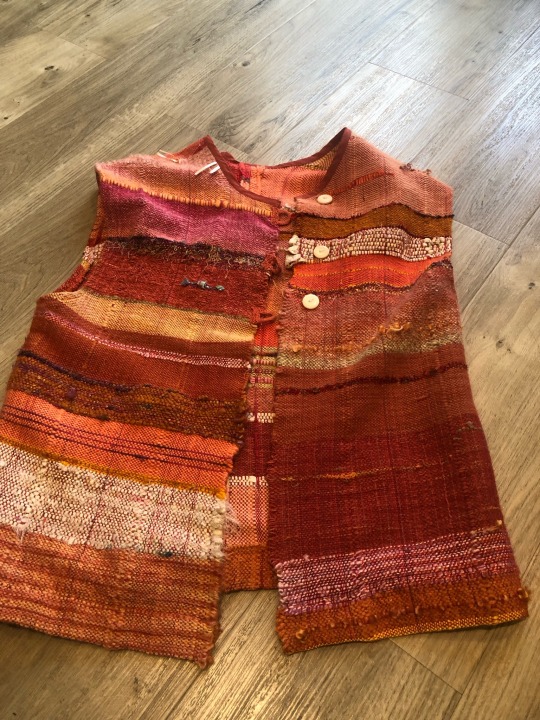
Sorry not sorry to grannypost again but look at this amazing jacket she made me??? She wove it herself on her loom out of wool, silk, banana fibre and scraps of old cloth. The buttons are made of antler. It took her a year and a half and I love it! It’s not vegan, but it is handmade, largely local and very sustainable. It’s an item of clothing I have a personal connection to because of the story behind it, and it shows that reducing how much cotton and polyester we wear doesn’t have to mean drab or boring clothing. So it feels pretty solarpunk to me! Now to learn how to do this kind of thing myself…
#solarpunk#hopepunk#environmentalism#cottagepunk#social justice#community#optimism#bright future#climate justice#fibre arts#weaving#wool#sustainable fashion#handmade clothes#textiles#textile arts#woollen clothing
165 notes
·
View notes
Text


Vintage 1970s 100% virgin wool embroidered cardigan from merriweathergoods
284 notes
·
View notes
Photo
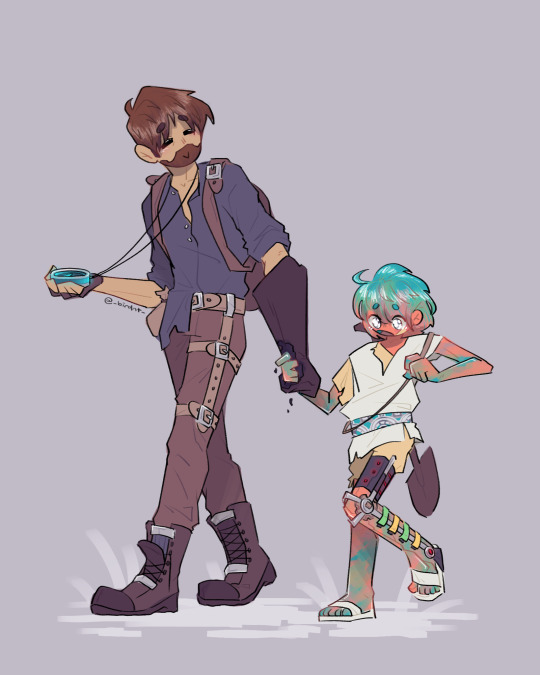

pixlriffs calls his copper ager his "child"... but what if it was an actual child?
" david and dadriffs "
edit: i got. my first ever cc notice on twt. i henceforth pledge my allegiance to pixlriffs he is all-generous and kind
part 2 where david meets grian
(story hc: In the Golden Age of the Ancient Capital, its scholars would seek eternal youth, experimenting on orphans for the “greater good”. But when they created a child who aged the world at the touch, they were quick to discard it, not knowing they threw away the very thing they were looking for. Centuries later, an archeologist finds the infant in ruin, his most precious discovery yet...)
#david's clothes were inspired by the white and yellow wool guidelines#his leg prosthetics were inspired by the redstone flying machines#and he has a wooden shovel because of the wooden shovel counters#empires smp#empires smp s2#empires smp fanart#pixlriffs#pixlriffs fanart#david copperfield#human au#character design#clothes study#headcanon#empires#empires pixlriffs#empires season 2#empires fanart#esmp#empires david#david the copper child
2K notes
·
View notes
Note
How did cotton win over linen anyway?
In short, colonialism, slavery and the industrial revolution. In length:
Cotton doesn't grow in Europe so before the Modern Era, cotton was rare and used in small quantities for specific purposes (lining doublets for example). The thing with cotton is, that's it can be printed with dye very easily. The colors are bright and they don't fade easily. With wool and silk fabrics, which were the more traditional fabrics for outer wear in Europe (silk for upper classes of course), patterns usually needed to be embroidered or woven to the cloth to last, which was very expensive. Wool is extremely hard to print to anything detailed that would stay even with modern technology. Silk can be printed easily today with screen printing, but before late 18th century the technique wasn't known in western world (it was invented in China a millenium ago) and the available methods didn't yeld good results.
So when in the late 17th century European trading companies were establishing trading posts in India, a huge producer of cotton fabrics, suddenly cotton was much more available in Europe. Indian calico cotton, which was sturdy and cheap and was painted or printed with colorful and intricate floral patters, chintz, especially caught on and became very fashionable. The popular Orientalism of the time also contributed to it becoming fasionable, chintz was seen as "exotic" and therefore appealing.
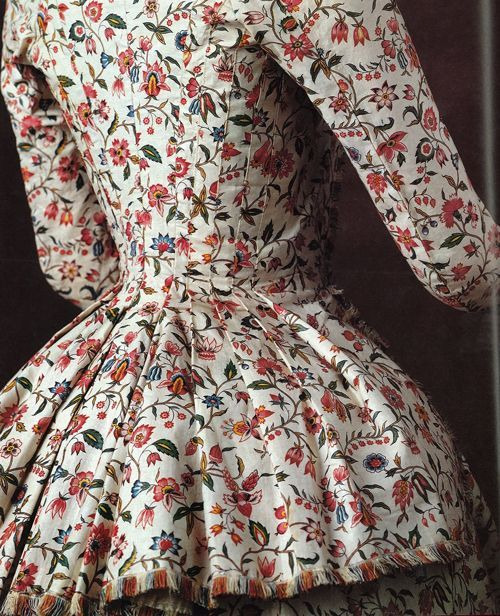
Here's a typical calico jacket from late 18th century. The ones in European markets often had white background, but red background was also fairly common.
The problem with this was that this was not great for the business of the European fabric producers, especially silk producers in France and wool producers in England, who before were dominating the European textile market and didn't like that they now had competition. So European countries imposed trade restrictions for Indian cotton, England banning cotton almost fully in 1721. Since the introduction of Indian cottons, there had been attempts to recreate it in Europe with little success. They didn't have nearly advanced enough fabric printing and cotton weaving techniques to match the level of Indian calico. Cotton trade with India didn't end though. The European trading companies would export Indian cottons to West African market to fund the trans-Atlantic slave trade that was growing quickly. European cottons were also imported to Africa. At first they didn't have great demand as they were so lacking compared to Indian cotton, but by the mid 1700s quality of English cotton had improved enough to be competitive.
Inventions in industrial textile machinery, specifically spinning jenny in 1780s and water frame in 1770s, would finally give England the advantages they needed to conquer the cotton market. These inventions allowed producing very cheap but good quality cotton and fabric printing, which would finally produce decent imitations of Indian calico in large quantities. Around the same time in mid 1700s, The East Indian Company had taken over Bengal and soon following most of the Indian sub-continent, effectively putting it under British colonial rule (but with a corporate rule dystopian twist). So when industrialized English cotton took over the market, The East India Company would suppress Indian textile industry to utilize Indian raw cotton production for English textile industry and then import cotton textiles back to India. In 1750s India's exports were mainly fine cotton and silk, but during the next century Indian export would become mostly raw materials. They effectively de-industrialized India to industrialize England further.
India, most notably Bengal area, had been an international textile hub for millennia, producing the finest cottons and silks with extremely advance techniques. Loosing cotton textile industry devastated Indian local economies and eradicated many traditional textile craft skills. Perhaps the most glaring example is that of Dhaka muslin. Named after the city in Bengal it was produced in, it was extremely fine and thin cotton requiring very complicated and time consuming spinning process, painstakingly meticulous hand-weaving process and a very specific breed of cotton. It was basically transparent as seen depicted in this Mughal painting from early 17th century.
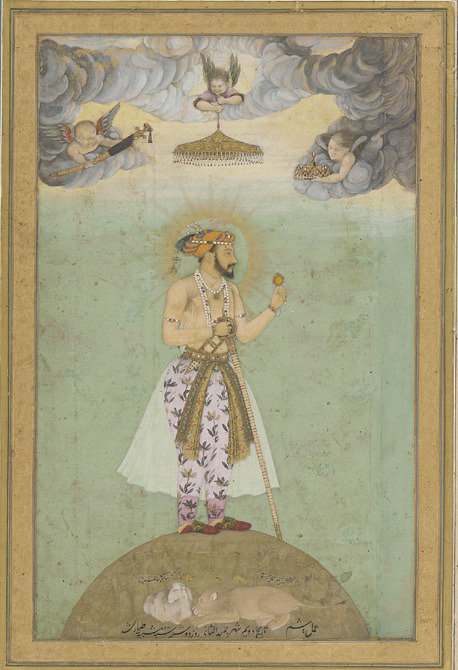
It was used by e.g. the ancient Greeks, Mughal emperors and, while the methods and it's production was systematically being destroyed by the British to squash competition, it became super fashionable in Europe. It was extremely expensive, even more so than silk, which is probably why it became so popular among the rich. In 1780s Marie Antoinette famously and scandalously wore chemise a la reine made from multiple layers of Dhaka muslin. In 1790s, when the empire silhouette took over, it became even more popular, continuing to the very early 1800s, till Dhaka muslin production fully collapsed and the knowledge and skill to produce it were lost. But earlier this year, after years lasting research to revive the Dhaka muslin funded by Bangladeshi government, they actually recreated it after finding the right right cotton plant and gathering spinners and weavers skilled in traditional craft to train with it. (It's super cool and I'm making a whole post about it (it has been in the making for months now) so I won't extend this post more.)


Marie Antoinette in the famous painting with wearing Dhaka muslin in 1783, and empress Joséphine Bonaparte in 1801 also wearing Dhaka muslin.
While the trans-Atlantic slave trade was partly funded by the cotton trade and industrial English cotton, the slave trade would also be used to bolster the emerging English cotton industry by forcing African slaves to work in the cotton plantations of Southern US. This produced even more (and cheaper (again slave labor)) raw material, which allowed the quick upward scaling of the cotton factories in Britain. Cotton was what really kicked off the industrial revolution, and it started in England, because they colonized their biggest competitor India and therefore were able to take hold of the whole cotton market and fund rapid industrialization.
Eventually the availability of cotton, increase in ready-made clothing and the luxurious reputation of cotton lead to cotton underwear replacing linen underwear (and eventually sheets) (the far superior option for the reasons I talked about here) in early Victorian Era. Before Victorian era underwear was very practical, just simple rectangles and triangles sewn together. It was just meant to protect the outer clothing and the skin, and it wasn't seen anyway, so why put the relatively scarce resources into making it pretty? Well, by the mid 1800s England was basically fully industrialized and resource were not scarce anymore. Middle class was increasing during the Victorian Era and, after the hard won battles of the workers movement, the conditions of workers was improving a bit. That combined with decrease in prices of clothing, most people were able to partake in fashion. This of course led to the upper classes finding new ways to separate themselves from lower classes. One of these things was getting fancy underwear. Fine cotton kept the fancy reputation it had gained first as an exotic new commodity in late 17th century and then in Regency Era as the extremely expensive fabric of queens and empresses. Cotton also is softer than linen, and therefore was seen as more luxurious against skin. So cotton shifts became the fancier shifts. At the same time cotton drawers were becoming common additional underwear for women.
It wouldn't stay as an upper class thing, because as said cotton was cheap and available. Ready-made clothing also helped spread the fancier cotton underwear, as then you could buy fairly cheaply pretty underwear and you didn't even have to put extra effort into it's decoration. At the same time cotton industry was massive and powerful and very much eager to promote cotton underwear as it would make a very steady and long lasting demand for cotton.
In conclusion, cotton has a dark and bloody history and it didn't become the standard underwear fabric for very good reasons.
Here's couple of excellent sources regarding the history of cotton industry:
The European Response to Indian Cottons, Prasannan Parthasarathi
INDIAN COTTON MILLS AND THE BRITISH ECONOMIC POLICY, 1854-1894, Rajib Lochan Sahoo
#i have fixed the wording in the beginning so it doesn't sound like i'm saying cotton in general dyed better than wool or silk#answers#fashion history#historical fashion#history#textile history#dress history#historical clothing#indian history#colonial history#indian textiles#cotton#slavery
2K notes
·
View notes
Text
youtube
Join me at The Color Farm to create a simple eco-print on merino wool using dye flowers and fresh leaf indigo. A simple hammer technique is a quick and easy way to capture the vivid natural color of summer. Taking the 21 Day Wardrobe Challenge with Wool &, I explore how to embellish this soft garment with coreopsis, marigold and fresh leaf indigo. This tutorial will introduce you to the cozy wool shirts of Wool & to show you how to add your own unique eco-print design picked straight from the garden. You will see my results on a merino wool top for inspiration to step into the natural printmaking world.
CHAPTERS
0:00 Introduction - Eco-printing with flowers on wool
2:05 Wool & wardrobe challenge
5:24 Merino wool shirt
7:14 Hammer technique - practice
10:22 Fiber prep
12:57 Eco-print flowers & leaves
15:25 Hammer eco-print on shirt
17:22 Eco-print result
18:36 Wrap-up
18:59 Sneak peak of next video tutorial
19:41 Blooper
SUPPLY LIST
Dye flowers (coreopsis & marigold) & fresh leaf indigo
Hammer/Mallet
Scissors
Barrier cloth
Barrier paper
Textile - merino wool used in this video
Mordant - aluminum potassium sulfate
#Margaret Byrd: Color Quest#solarpunk#eco print#wool#wool fabric#clothes#cloth#wool clothes#wool cloth#merino wool#flower hammering#coreopsis#marigold#fresh leaf indigo#indigo leaf#indigo#Youtube
4 notes
·
View notes
Text

Amazing mohair sweater
#fluffy clothes#angora#angora sweater#fluffy#wool#flufangora#annaangora#moreangora#mohair#mohair sweater
171 notes
·
View notes
Text
thinking about how I had a few folks at my last market suggest to me (kindly and with good intentions) that I make and sell some versions of the hand knit cardigan I was wearing because people would "totally pay $300 for that!"
I appreciated the sentiment, but people don't understand what goes into handmade clothes! I don't use a knitting machine. Every stitch in that garment is created by hand on needles, and the sleeves were brioche. Even using inexpensive acrylic yarn for the whole project, and accounting for the HUGE sleeve stitches (saving me time making the sleeves)—the material cost was $55 and the labor was well beyond that.
Let's conservatively estimate the cardigan took me 30 hours to create. Currently, when pressed to put a dollar amount to my time, I use the living wage as a baseline and then go up from there $1/hour for every year I have been actively practicing that particular skill. In the case of knitting that would be 11 years, and the current living wage in my area is approximately $23/hour. Setting aside the fact that this is calculated based on a 40 hour work week and I don't believe that is ethical or sustainable, we'll just leave it at $34/hour. That would make labor alone $1,020.
This brings the "production cost" to $1,075.
Items are not sold at production cost because that would leave your profit margin at 0%. This is not sustainable because it costs money to run a business (think things like paying for computer repairs, buying tools, the tablecloth you use at markets, paying for a website, etc.). Realistically to cover business costs and still come out with a 7% "net" profit margin, which is just a number pulled from averages in the clothing retail business...
... I'd have to sell that cardigan for $1,350.
So yeah! Something to think about when you see the price of clothes that are handmade. :o)
#and this is for something made with PLASTIC yarn!! not cotton! not wool! not really ethical even though it's technically#slow fashion#this is why garments were originally intended to last a LIFETIME or even generations!!!!#they are not cheap! clothes should proportionately be one of the singularly most expensive things we own btw!!#thank you for coming to my talk#I will be ranting again about this in the future I'm sure#handmade fashion#small business#fast fashion#shop small#etsy seller#knitting#fiber art#handmade life#fashion#indie fashion#style#strawberrum chirps
92 notes
·
View notes
Text


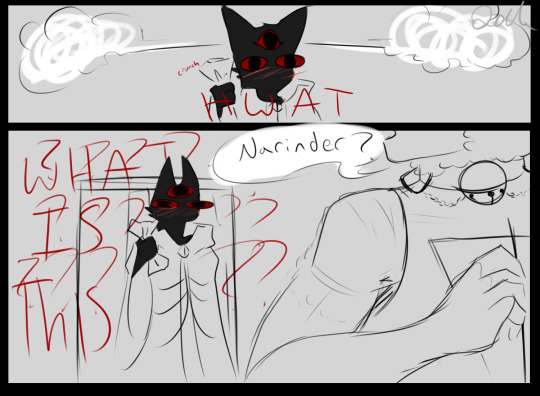
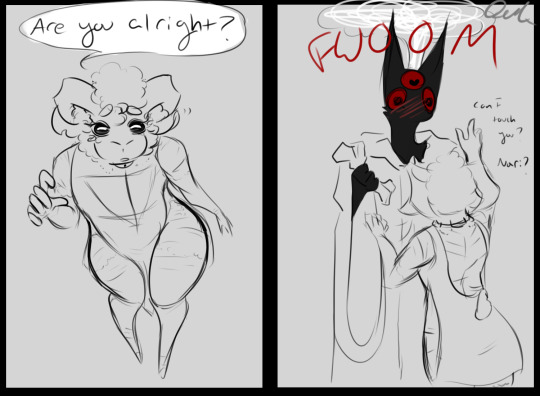

In the warm months, sheep put on their winter coats
#was inspired by my inner mind world building that sheep dont wear conventional clothing because they have wool#but when they get peeled they are considerably more bare. so clothes!#moses finds out that the added layers can be weaponized#thick lashes thick thighs my lamb saves lives#moses named the crown camellia. cammie is a nickname#cotl#cotl lamb#the lamb#cult of the lamb#cult of the lamb fanart#bonesart#cotl narinder#cotl fanart#the one who waits#narilamb#narinder x lamb#cotl narilamb#cult of the lamb narinder#ft derp narinder
69 notes
·
View notes
Text
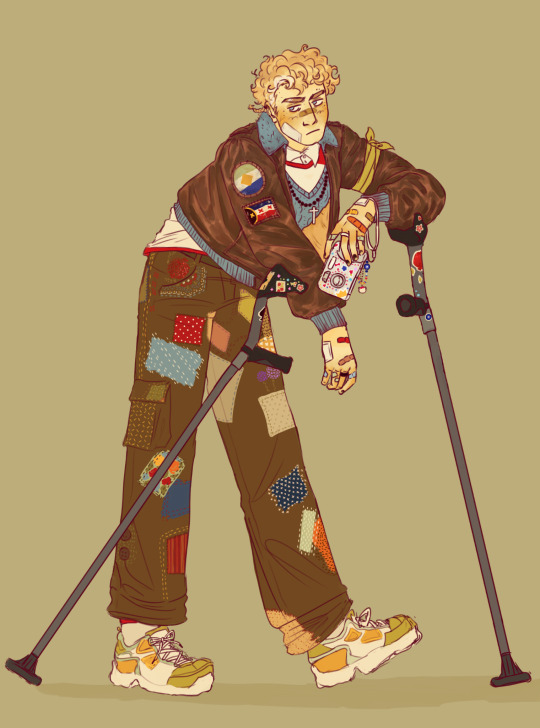

For someone who vibrates if he thinks about the guy for too long, I don't draw ctommy nearly as much as I should
#why yes those *are* the aroace rings thank you for noticing#yes i gave him some pomegranate parafenelia he deserves a sprinkle of my culture#some more design notes: the jacket is repurposed from wilbur's old pogtopia coat#and tubbo's bandana is wrapped the same place revivedbur's bandage is#my hc is that post revival he is just constantly cold (ahem rheumatism ahem) so he has minimum three layers on at all times#layers being his l'manberg shirt his classic tommyinnit tm shirt and a knitted sweater vest of friend's wool#the red on his sleeves is from helping wilbur with the redstone in ho16#oh and the evil eye cus more culture why not#thats all the design choices but i do want to mention#i took inspiration from art nouveau specifically alohonse mucha's art. however. only after i finished rendering the jacket did i remember#the clothes werent supposed to be so detailed#but its fine its a feature now#oh and the sbi braid dont forget that#ive ranted for so long now i think i may add this all in the reblogs later#but yeah hope yall like it#my art#dsmp#dsmp fanart#ctommy#ctommy fanart#fennec. art
1K notes
·
View notes